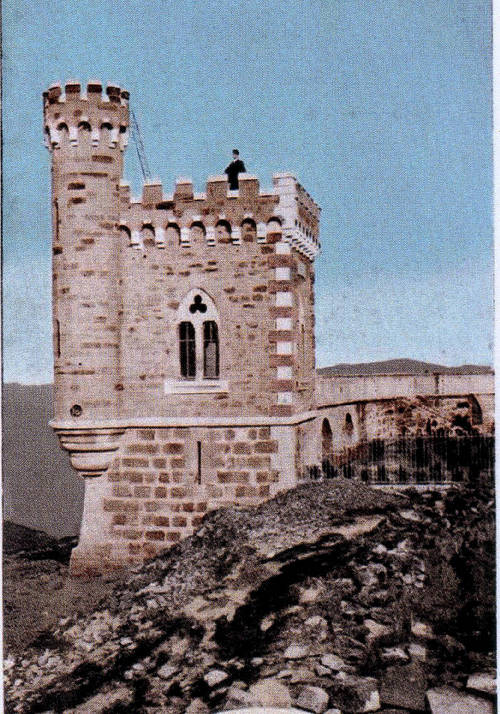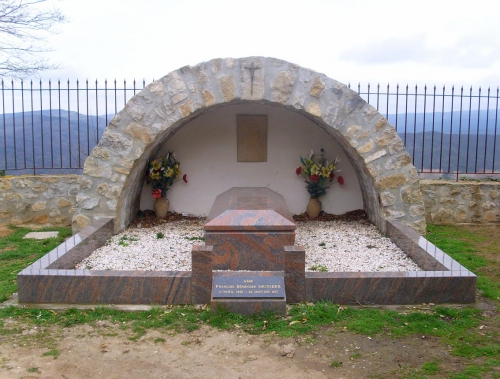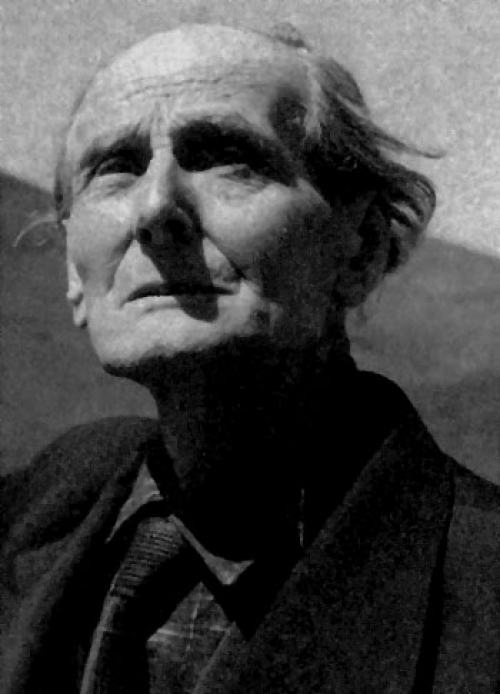ADVENTURES - Rennes-le-Château
Religious Thought at the Turn of the Century
Evidence about the popularity of Rennes-le-Château has recently come to light in the book called; “L’Itinéraire en Terre d’Aude” by Jean Ginon, published in 1936. My friend Toni in the Atelier Empreinte bookshop was so pleased because the book proved what he had always suspected; the legends of Bérenger Saunière’s buried treasure existed long before Pierre Plantard got interested in 1956.
The book says (my translation); We are in the heart of Visigoth country and lingered to visit the capital of the Razès, the previous Rhedae. Leaving Couiza, the road soon turns to the left, that’s the road. On the ridge of the plateau an unusual decoration; ruined houses, a delapidated feudal castle on a limestone cliff, then a villa, towers on a veranda, new and modern, contrasting strangely with the ruins; it is the house of cure who built this sumptuous dwelling with money from buried treasure, say the peasants!
Then I found another reference; In 1925 a young female teacher came to take up a post in the village school. The commune was unable to find suitable accommodation so Marie Dénarnaud agreed to let her lodge at the villa. During her four-year stay, she too became close to Marie, but found her reluctant to speak about her days with Saunière. However, her pupils were more forthcoming, and told her that he parents firmly believed that he had discovered hidden treasure. (Web of Gold, 2000) That was only eight years after Bérenger had died.
In my village near Narbonne, where my previous life called Jules was the mayor until he died in 1936, an old lady had be-friended me and told me so much about life in the 1930’s. “Everybody” went to Rennes-le-Château, she told me, and she had a whole collection of the picture-postcards that the priest had had printed.
 The newly built Tour Magdala. Bérenger Saunière himself on the roof.
The newly built Tour Magdala. Bérenger Saunière himself on the roof.
A second clue that Jules had visited there was that he was a friend of Prosper Estieu, the Occitan poet from Castelnaudary; who just happened to be the supply teacher for the village for two or three years around the turn of the century. And Estieu “just happened” to meet the great neo-Cathar, Déodat Roché, who helped him publish his Occitan poetry magazine. One of the writers in this magazine was my previous life, Jules.
It seems he - or I - must have been to Rennes-le-Château in a previous life, to deliver poems, maybe.
I’ve certainly felt attracted to Rennes-le-Château and written much about it. I have been visiting there since 1980. Had I felt anything about the place?
The place no, but the priest yes. In the museum, about 1990, I saw a re-created bedroom of the priest. But he never slept in the villa, he slept in the presbytère. I thought; why can’t they let him rest in peace? Then, at his graveside, I found myself asking him what secrets he was hiding. At this time the tourist influx after the publication of The Holy Blood and the Holy Grail had began, and some people were even walking straight across graves to see Bérenger’s. I had a lump in my throat. Why couldn’t they leave him in peace?
The worst thing was when they moved his grave in 2004. I was quite distressed to think that they had dug him up, handled his bones, stolen his prayer-book and then re-buried him in unconsecrated ground. That was awful. You can read about this by clicking here.
 This new grave is now overgrown with weeds.
This new grave is now overgrown with weeds.
There is much, much more in my book.
Déodat Roché, who lived just down the road at Arques, was a neo-Cathar, that is, one of the spiritual people who wanted to revive Catharism. A “Gnostic” church was even created by one Jules Dionel around 1890, in which Billard, Saunière’s Bishop of Carcassonne was involved. To what extent we can’t say, because this church folded and Dionel was then welcomed back into the Catholic fold.
 Déodat Roché. He lived to be over 100 years old.
Déodat Roché. He lived to be over 100 years old.
Catharism was certainly a great part of being Occitan, and Occitan poetry often talks about “the men from the north” who attacked and devastated the beautiful Languedoc. The Occitan culture is far more than just a language, it is an attitude of mind. While Bérenger Saunière was a kind man, and preached to his parishioners in Occitan because they did not know Latin, it’s obvious he did not have a Cathar mind-set. Prosper Estieu was asked to leave Rennes-le-Château. Why?
You can find out more in another article. Click here.
Inscrivez-vous au blog
Soyez prévenu par email des prochaines mises à jour
Rejoignez les 28 autres membres


